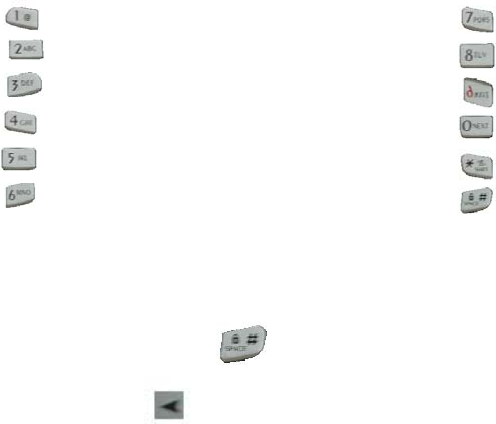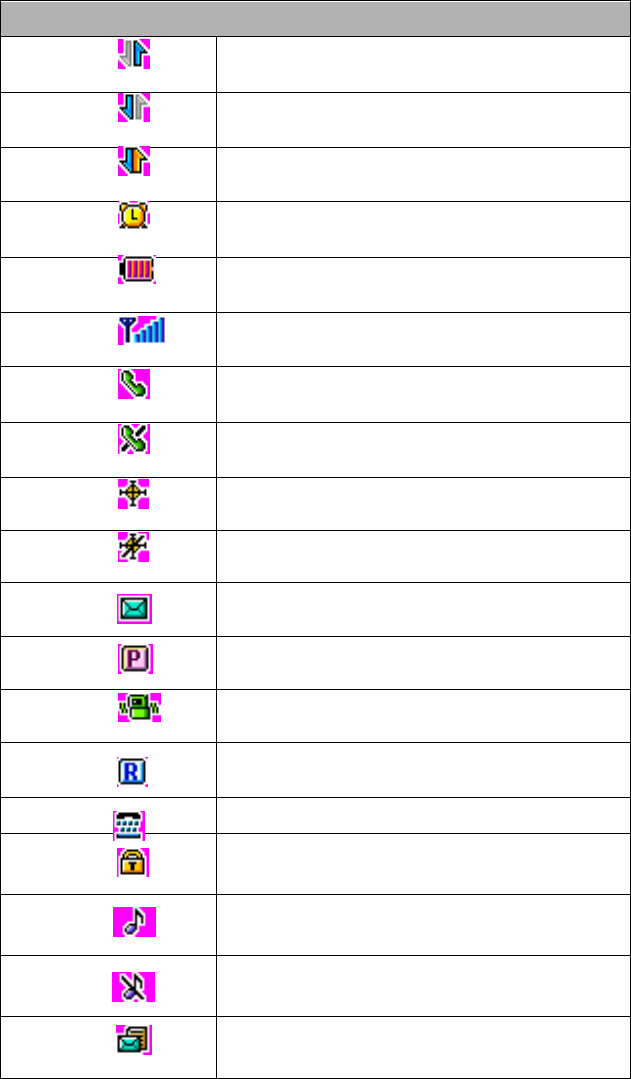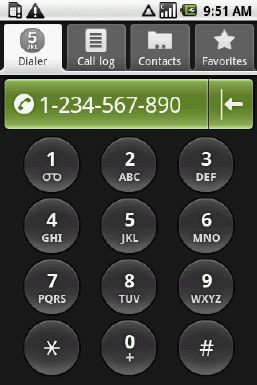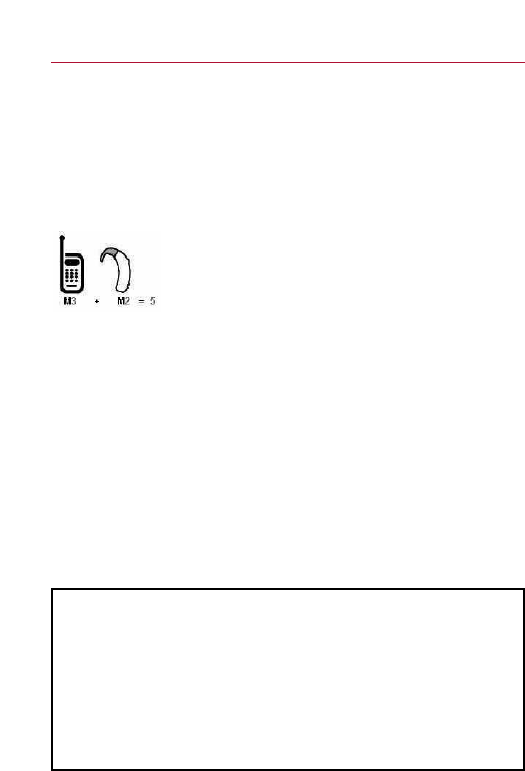LG Electronics USA VM670 PCS CDMA Phone with WLAN and Bluetooth User Manual VM670
LG Electronics USA PCS CDMA Phone with WLAN and Bluetooth VM670
Users Manual
- 1 -
User Manual
VM670

Part 15.21 statement
" Change or Modifications that are not expressly approved by the manufacturer could void
the user's authority to operate the equipment. “
Part 15.105 statement
This equipment has been tested and found to comply with the limits for a class B digital
device, pursuant to Part 15 of the FCC Rules.
These limits are designed to provide reasonable protection against harmful interference in
a residential installation. This equipment generates uses and can radiate radio frequency
energy and, if not installed and used in accordance with the instructions, may cause harmful
interference to radio communications. However, there is no guarantee that interference will
not occur in a particular installation. If this equipment does cause harmful interference or
television reception, which can be determined by turning the equipment off and on, the user
is encouraged to try to correct the interference by one or more of the following measures:
- Reorient or relocate the receiving antenna.
- Increase the separation between the equipment and receiver.
- Connect the equipment into an outlet on a circuit different from that to
which the receiver is connected.
- Consult the dealer or an experienced radio/TV technician for help.

Part 15 Class B Compliance
This device and its accessories comply with part15 of FCC rules.
Operation is subject to the following two conditions:
(1) This device & its accessories may not cause harmful interference.
(2) This device & its accessories must accept any interference received,
including interference that may cause undesired operation.
Body-worn Operation
This device has been tested for typical body-worn operations
with the distance of 0.79inches (2.0cm) from the user’s body.
To comply with FCC RF exposure requirements, a minimum separation distance
of 0.79inches(2.0cm) must be maintained from the user's body.
For example, this device must be maintained from the user's body with
an appropriatebelt-clip accessory.[More than 0.79inches(2.0cm)]
Additionally, Belt clips, holsters & other body-worn accessories may not contain
metallic components.

- 2 -
Getting Started
Unlocking Your Phone
If you received your LS670 in the mail, you may need to unlock it before making calls.
1. Press the END/PWR Switch for 2~3 seconds.
2. Press soft key Unlo c k.
3. Enter your four-digit lock code. For security purposes, the code will not be visible as you type.
Note: If you can’t recall your lock code, try using the last four digits of your Social Security number, the
last four digits of your Phone Number or 0000.
View of Phone
1. END/PWR Switch: Lets you power the phone on or off.
2. Antenna: Retractable antenna provides optimum reception for 800 MHz & 1900 MHz frequencies.
3. Power On Indicator: Illuminates red when the phone powers on or when you receive incoming calls.
Flashes red when you have messages of scheduled alarms.
4. Headset Jack: Provides connection for an optional headset.
5. Volume Control Keys: Adjust the Ring Volume in the Main Menu or the Voice Volume during a call.
The keys also scroll through mouths in the Calendar or pages in the MiniBrowser.
6. Mouse Key: Allows quick and easy scrolling through the menus.
7. OK: Lets you place a call, receive a call, end a call or select menu options.
8. CLR: Lets you clear an entry or back-up in the menu.
9. Folder : Lets you answer or end calls.

- 3 -
Installing and Removing the Battery
To install the battery, insert the bottom of the battery into the opening on the back of the phone. Then,
push the battery down until the latch clicks.
To remove the battery, press down on the latch and remove the battery from the phone.
Turning Your Phone On and Off
To turn your phone on, move the On/Off Switch (near the antenna) to the ON position. Your phone
performs a short self-test before letting you know it is operational.
If your phone does not turn on, make sure the battery is installed correctly and is adequately charged or
has external power (via the AC Adapter, Cigarette Lighter Adapter or Hands-Free Car Kit).
To turn your phone off, move the On/Off Switch to the OFF position.
Power On/Off, Call End
Main Menu
When your phone acquires Service, the Greeting (a banner of text), the current time and date and the
Main Menu are displayed. If you are in authorized analog cellular provider’s service area, you are ready
to send and receive calls.
Power Save Mode
When the phone is in an area without service for 15 minutes, it stops searching for service and enters into
the power Save Mode. When your phone activates this feature, Power Save is displayed on your screen.
Back Menu
Search
- 4 -
The phone automatically checks for service periodically or you can check manually by pressing any key.

- 5 -
Entering Characters Using the Keypad(T9)
To enter a letter, punctuation or number when creating Phone Book or Scheduler entries, press the
corresponding key until the desired character appears. By default, the first letter of a word is capitalized
and following letters are lowercase. Characters in the following order:
1 . ? , ‘ & - @ ( ) / ~ P Q R S 7 p q r s
A B C 2 a b c 2 T U V 8 t u v 8
D E F 3 d e f 3 W X Y Z 9 w x y z 9
G H I 4 g h i 4 Next 0
J K L 5 j k l 5 Shift
M N O 6 m n o 6 Space
After a character is entered, the cursor automatically advances to the next space after two seconds. You
can also advance the cursor by pressing or entering a character not on the same key.
If you make a mistake, press to move the cursor left or [CLR] to erase a character. To clear the
entire entry, press and hold [CLR] for two seconds.
1 7PQRS
9WXYZ
8TUV
6MNO
5
J
4
G
3DEF
ABC
1
*
0Space

- 6 -
Display Icons
Display icons are the symbols your phone uses to communicate important information. They are as
follows:
ICON DESCRIPTION
3G send
3G receive
3G send receive
Alarm
Battery
Antenna
In use
No service
Location
Location out
Vo i c e
Voice Privacy
Vibrate
Roaming
TTY
SSI
Ringer
Ringer off
Text + voice
- 7 -
Antenna
The antenna on your LS670 provides maximum reception by extending of retracting it.
!!! WARNING – CHOKING HAZARD – ANTENNA MAY BECOME DISLODGED
Attempting to remove or repeated twisting of the antenna will loosen the materials securing it into
antenna. Once the antenna is loosened or removed, only an authorized service provider
Representative can restore the antenna’s original integrity. Do not attempt to remove or twist the
antenna.
Signal Strength
The quality of each call you make or receive depends on the signal strength on your area. The number of
bars in the Signal Strength icon informs you of the current strength. The more bars, the stronger the signal.
Battery Capacity
Your LS670 is equipped with a Lithium Polymer battery. It allows you to recharge your battery before it
is fully drained. The battery provides approximately 180 minuets of continuous digital talk time or
approximately 110 hours of continuous digital standby time.
Note: Long backlight settings affect the battery’s talk and standby times.
When the battery reaches 5% of its capacity, the battery icon blinks. When there is about one minute of
talk time left, the phone sounds an audible alert every 30 seconds and then powers down.
If the battery’s charge is completely run down, it takes 2 to 3 hours to fully recharge. It is not necessary to
let the battery completely run down before recharging.
To charge your batteries, use only approved charging accessories.
3.25

- 8 -
Using the AC Adapter
To charge the battery, plug the AC Adapter into a standard wall outlet and connect it to the phone via the
I/O Connector on the bottom of the phone. Alternatively, you can place the phone in the charging cradle
provided with your phone and connect the AC Adapter to the back of the cradle.
The battery Charge Status icon flashes during charging. When the battery is fully charged, the battery icon
stops flashing.
Using Your Phone
Placing a Call
When the phone is turned on, check the Signal Strength icon to see of you are in a Service Area or
authorized PCS CDMA provider’s service area.
1. At Home Screen or Menu Screen.
2. Touch Dialer
3. At Dialer Screen, Enter digits.
4. Touch Dial Number Screen.

- 9 -
5. Dialing
6. If you want call end, press MENU key and Touch Call End or press Power On/Off key on top of
phone

- 10 -
Roaming With Your Phone
Your Phone is you can use it to make and receive calls in many places.
Setting Your Phone’s Mode
Your Phone allows you to control your ability to roam. (See “Set Mode”)
Calling Experience
When you use your phone on other PCS CDMA networks, your calling experience and call quality will be
quite similar to what you experience when making calls within the Network. Although certain calling
features may not be available, your phone calls are still private and secure.
Correcting Dialing Mistakes
To delete one digit at a time, press . To delete all digits, press and hole .
Redialing Last Outgoing Number
Press and hold [SEND] for 2 seconds.
Dialing Options (phone book – Not Functioning)
When you enter numbers in the Main Menu, dialing options are displayed. To display a Phone Book entry,
enter its entry number. To use the 4- Digit Dial option, enter the last four digits of a phone number in your
Phone Book.
To select an option, highlight it and press [SEND] .(Menu display only, phone book – Not Functioning)
z Call – Dials the phone number.
z Roam Confirm – Reminds you that you are making a call on an. (See “Disabling Roam Confirm” )
z Roam Call – Dials the phone number using the current PCS CDMA or analog cellular network.
- 11 -
z Save – Saves the phone number in your Phone Book. (See “Saving a Phone Number” on the
following page.)
z Find – Displays phone numbers in your Phone Book that contain the entered numbers. (See “Finding
a Phone Number” )
z Hard Pause – Inserts a Hard Pause. (See “Dialing and Saving Phone Numbers With Pauses” )
z 2- Second pause – Inserts a two-second pause. (See “ Dialing and Saving Phone Numbers With
Pauses” )
z Exit – Returns to the Main Menu.
z A Phone Book Entry – Displays the Phone Book entry. To dial the entry’s speed-dealing number,
press and hold [SEND]. To dial an alternate number, highlight it and press and hold [SEND].
☞Tip! To speed dial a Phone Book entry from the Main Menu, press and hold the entry’s number.
If the entry number is two digits, enter the first digit, then press and hole the second digit. (This
feature will not work when the Roam Confirm option is enabled.)
z 4-Digit Dial – Dials the phone number in your Phone Book that ends with the four digits you enter.
(See “4-digit Dialing” )
In Call Options
During a call, your phone displays menu options in addition to the Main Menu.
To select an option, Highlight it and press [OK].( functions ‘Send’ and ‘End’ only)
z End Call - Ends the call
z Send Tones - Sends the next set of numbers after a Hard Pause. (See “Dialing and Saving Phone
Numbers With Pauses “ on the previous page.)
- 12 -
z Mute or Unmute – Select Mute to mute your phone’s microphone. Select Unmute to reactivate the
microphone.
z Dial 3-Way Call – Lets you dial another phone number.
z Flash – Answers an incoming Call Waiting call or connects the third party for Three-Way Calling.
Incoming Call Notification
Depending on your settings, your phone notifies you of incoming calls in the following ways:
z The phone rings or vibrates
z The LED flashes green
z The backlight illuminates
z The screen displays an incoming call message
z The phone number of the caller is displayed of the phone number is available
z The caller’s name is displayed if the phone number is in your Phone Book
The following options are also displayed. To select an option, highlight it and press [SEND].
z Answer – answers the call.
z Silent Ringer – Mutes the ringer.
Note: You can also mute the ringer by pressing the up or down Volume Control key or [CLR].
Answering Calls
To answer incoming calls, open the Flip (in Active Flip Mode) or press [SEND].

- 13 -
Note: If you open the Flip (in Active Flip Mode) and then press [SEND], you will hang up on the caller.
To answer incoming roam calls, highlight Answer and press [SEND].
Displaying Your Phone Number(phone book – not functioning)
To display your phone number:
1. From the Main Menu, select SETTING & TOOLS.
2. And press 4 – 2 – 1. (System – Device Info – My Phone Number)
Setting the Ring Volume to Vibrate
To set the phone to Vibrate Mode, press the down Volume Control key until Ring Volume Vibrate is
displayed. The phone will vibrate and – Vibrate On- is displayed above the Main Menu.
To set the phone to Vibrate Mode using the Main Menu, see “Adjusting the Volume” .

- 14 -
Getting the Most From Service
Retrieving Page/Text Messages
To retrieve page/text messages:
1. From the Messaging
2. Highlight Inbox and press [OK].
Highlight the message you want to display and press [OK].
To select an option, highlight it and press [OK].
Text Message options:
z Forward
z Save Quick-Text.
z Add To Contacts
z Lock
z Message Info.
Erasing All Page/Text Messages
1. From the Messages Menu, Press the Options Menu
2. Highlight Erase All and press [OK].
3. Highlight Yes and press [OK].
Page/Text Message Storage
Your LS670 can store up to 50 page/text messages. When the message memory is 100% full, a warning

- 15 -
message prompts you to erase messages to obtain more memory space.
Roaming on to Other Service Providers
Roaming occurs when you are in an area serviced by another authorized service provider. When this
situation occurs, the R icon and Digital Roam of Analog Roam are displayed. If there is no service
available, the ☎ i is islay.
(Call History- not functioning)
Page/Text Messages
For information on page/text messages, see “Retrieving Page/Text Messages” .
Sounds
Adjusting the Volume
1. From the Main Menu, highlight Sounds and press [OK].
2. Highlight Volume and press [OK].
3. Highlight Ringer or Key Beep and press [OK].
☞Tip! You can use the Volume Control keys to adjust the Ring Volume in the Main Menu or the
Voice Volume during a call.
4. Highlight High, Medium, Low, Off or Vibrate (for Ringer only) and press [OK].
Note: When the phone is in Vibrate Mode and attached to and accessory (Desktop Charger, Hands-

- 16 -
Free Car Kit, etc.), it uses the Standard Ring Type to alert you of incoming calls, alarms or messages.
Selecting Ring Types for Voice Calls
To Select a Ring Type for Voice Calls:
1. From the Main Menu, highlight Sounds and press [OK].
2. Highlight Ring Type and press [OK].
3. Highlight Voice Calls and press [OK].
4. Highlight With Caller ID, No Caller ID or Roaming and press [OK].
Note: If you select Roaming, the Ring Type is used for all incoming roaming calls.
5. Highlight a Ring Type and press [OK]. You will hear a preview of the Ring Type when you highlight
it.
☞Tip! You can also assign different Ring Types to individual Phone Book entries. (See “Selecting an
ID Finger” on page 46.)
Selecting Ring Types for Messages
To select a Ring Type for Messages:
1. From the Main Menu, highlight Sounds and press [OK].
2. Highlight Ring Type and press [OK].
3. Highlight Messages and press [OK].
4. Highlight Voicemail, Page/Text of MiniBrowser and press [OK].
5. Highlight a Ring Type and press [OK]. You will hear a preview of the Ring Type when you highlight
it.

- 17 -
Tone Length
Longer tone lengths may be better for tone recognition when dialing voicemail or other automated
systems.
To select a tone length:
1. From the Main Menu, highlight Sounds and press [OK].
2. Highlight Tone Length and press [OK].
3. Highlight Short of Long and press [OK].
Alert Notification
To enable of disable alert sounds:
1. From the Main Menu, highlight Sounds and press [OK].
2. Highlight Alerts and press [OK].
3. Select an alert by highlighting it and pressing [OK].
z Services – An alert sounds when you exit or enter PCS CDMA or cellular coverage.
z Messages – An alert sounds when you receive a voicemail or page/text message.
z Minute Minder – Your phone beeps once a minute when you are on a call. (The beep is not audible
to the other party.)
4. Highlight ON or Off and press [OK].
Display
For information on changing Backlight, Greeting or Contrast settings, see Handy Tips.

- 18 -
Display Menu
Security
Accessing the Security Menu
You must enter your lock code to view the Security menu. If you forget your lock code, try using the last
four digits of your Social Security number, the last four digits of your Phone Number or 0000.
Security Menu
To access the Security menu:
1. From the Main Menu, select SETTING & TOOLS and press 4 – 2 (System – Security).
2. Enter your lock code.
Locking Your Phone
When your phone is locked, you can only make calls to 911, Customer Care and Special Numbers or
receive incoming calls.
To lock your phone:
1. From the Security menu, highlight Lock Phone and press [OK].
2. Highlight Lock Now or On Power up and press [OK]. If you select On Power Up, the phone will be
locked each time it power up.
Unlocking Your Phone
1. Highlight Unlock and press [OK].
2. Enter your lock code.

- 19 -
Changing the Lock Code
To change your lock code:
1. From the Security menu, highlight Change Lock and press [OK].
2. Enter your new lock code.
3. Reenter your new lock code.
Answering Your Phone with the Hands-Free Car Kit
You can select different answering options when your phone is connected to the Hands-Free Car Kit.
To answer calls automatically or by pressing any key:
1. From the Main Menu, highlight Setup and press [OK].
2. Highlight Car Use and press [OK].
To select and option, highlight it and press [OK].
z Any Key Answer - You can answer calls by pressing any key (not including the [CLR] key, Mouse
Key or Volume Control keys).
z Auto Answer - Your phone answers incoming calls automatically after five seconds.
3. Highlight On and press [OK].
To disable an option, follow steps 1 and 2 and select Off.

280
FCC Hearing-Aid Compatibility (HAC)
Regulations for Wireless Devices
On July 10, 2003, the U.S. Federal Communications Commission
(FCC) Report and Order in WT Docket 01-309 modified the
exception of wireless phones under the Hearing Aid Compatibility
Act of 1988 (HAC Act) to require digital wireless phones be
compatible with hearing-aids. The intent of the HAC Act is to
ensure reasonable access to telecommunications services for
persons with hearing disabilities.
While some wireless phones are used near some hearing devices
(hearing aids and cochlear implants), users may detect a buzzing,
humming, or whining noise. Some hearing devices are more
immune than others to this interference noise, and phones also
vary in the amount of interference they generate.
The wireless telephone industry has developed a rating system for
wireless phones, to assist hearing device users to find phones that
may be compatible with their hearing devices. Not all phones have
been rated. Phones that are rated have the rating on their box or a
label located on the box.
The ratings are not guarantees. Results will vary depending on the
user's hearing device and hearing loss. If your hearing device
happens to be vulnerable to interference, you may not be able to
use a rated phone successfully. Trying out the phone with your
hearing device is the best way to evaluate it for your personal
needs.
M-Ratings: Phones rated M3 or M4 meet FCC requirements and
are likely to generate less interference to hearing devices than
phones that are not labeled. M4 is the better/higher of the two
ratings.
T-Ratings: Phones rated T3 or T4 meet FCC requirements and are
likely to generate less interference to hearing devices than phones
that are not labeled. T4 is the better/ higher of the two ratings.
Safety

281
Hearing devices may also be rated. Your hearing device
manufacturer or hearing health professional may help you find this
rating. Higher ratings mean that the hearing device is relatively
immune to interference noise. The hearing aid and wireless phone
rating values are then added together. A sum of 5 is considered
acceptable for normal use. A sum of 6 is considered for best use.
In the example to the left, if a hearing aid meets
the M2 level rating and the wireless phone meets
the M3 level rating, the sum of the two values
equal M5. This should provide the hearing aid user
with “normal usage” while using their hearing aid
with the particular wireless phone. “Normal usage” in this context
is defined as a signal quality that’s acceptable for normal
operation.
The M mark is intended to be synonymous with the U mark. The T
mark is intended to be synonymous with the UT mark. The M and T
marks are recommended by the Alliance for Telecommunications
Industries Solutions (ATIS). The U and UT marks are referenced in
Section 20.19 of the FCC Rules. The HAC rating and measurement
procedure are described in the American National Standards
Institute (ANSI) C63.19 standard.
When you're talking on a cell phone, it's recommended that you
turn the BT (Bluetooth) mode off for HAC.
Safety
For information about hearing aids and digital wireless phones
Wireless Phones and Hearing Aid Accessibility
http://www.accesswireless.org/hearingaid/
FCC Hearing Aid Compatibility and Volume Control
http://www.fcc.gov/cgb/consumerfacts/hac_wireless.html